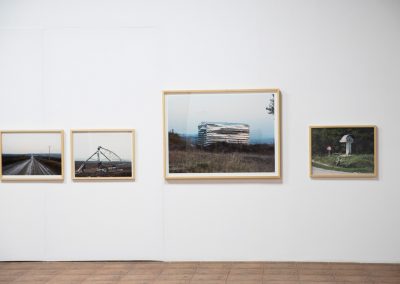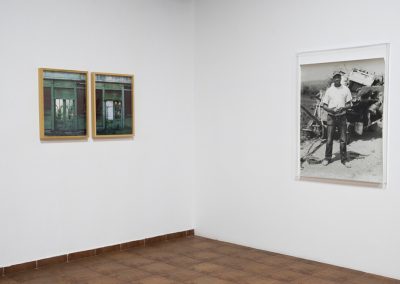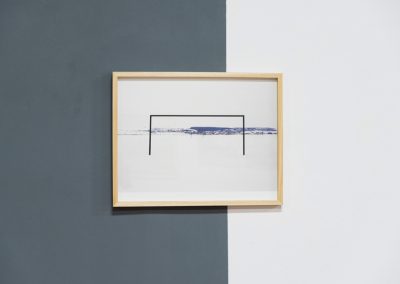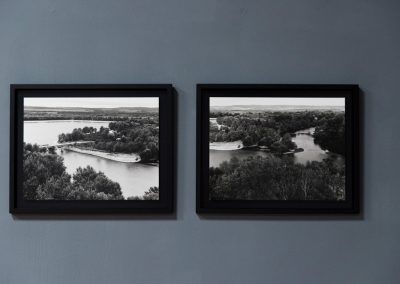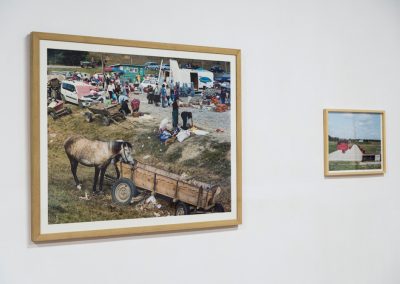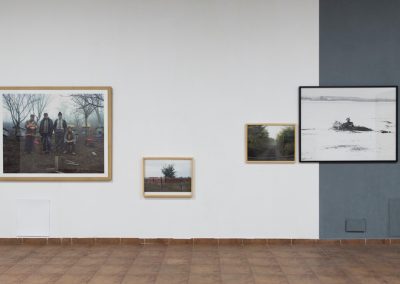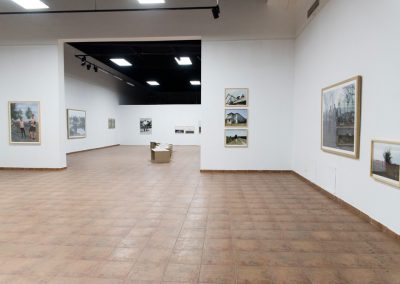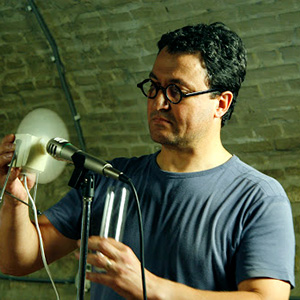
About Matei Bajenaru
Matei Bejenaru is a visual artist who lives and works in Iaşi, where he teaches photography and video art at the “George Enescu” University of Arts. In his projects, through photography, video, performance and inter-media installations, he analyzes how the ways of economic production, technological knowledge, mentalities and lifestyles have changed in the last two decades in the post-communist countries. The Romanian workers’ immigration towards the West was analyzed in his artistic projects Travel Guide and Maersk Dubai, selected for various international exhibitions, like the ones in Tate Modern, Level 2 Gallery in London in 2007, The Taipei Biennial in 2008.
His choral music experimental project, started in 2010, Songs for a Better Future, was presented at The Drawing Room and Tate Modern in London, Western Front la Vancouver, Kuenstlerhaus Buchsenhausen Innsbruck, Laakteater Haga. The most recent episode of this project, Ode of the Matter, was exhibited at The National Museum of Contemporary Museum in Bucharest and at the Art Encounters Biennial in Timişoara.
Read more: https://ancapoterasu.com/matei-bejenaru/matei-bejenaru-cv
Matei Bejenaru / Prut. Image and territory, The National Museum of The Romanian Peasant Tancred Bănățeanu Hall, Bucharest, 2018
Matei Bejenaru’s documentary photography project explores the Romanian rural landscape and its diverse topographical, social and economic aspects alongside the river Prut. Over 1500 photo-negatives made during the past seven years are part of a growing archive of images, a visual documentation following long-term changes within this territory.
The exhibition “Prut. Image and Territory” is a first public presentation of these images, a first curatorial selection and a possible reading of the images captured by Matei Bejenaru. The artist employs a complex photographic language to navigate between matters of aesthetics and ethics, relational art and documentary objectivity.
The show reveals various approaches, where we are able to recognize elements of the humanist school of photography regarding the visual lyricism of the photographs, their daily life character and the way that the artist builds a rapport to the subjects portrayed. Matei Bejenaru’s practice in documentary photography relates to the practice of Alec Soth. From the wide frames where we can distinguish silhouettes emerging from the natural landscape, to architectural details, startling geometries, old and new constructions, to portraits of different generations in the villages, Matei Bejenaru reveals a dynamic universe, contradictory and ever-changing. It is simultaneously defined by its post-communist, post-transition, post-privatization, post-European integration and neo-capitalist context.
The selection of the photographs avoids strict chronological and geographical criteria, although they are embedded in the title of each image of the growing archive. Two central themes are followed in the curatorial choices: the topography of territory and its habitation [locuire].
“Topography” is hereby understood very closely to what William Jenkins (“New Topographics: Photographs of a Man-altered Landscape”, 1975) defined as a detailed description of a certain area. These types of images appear within the exhibition as isolated visual moments, suspended in a narrative arch that remains just at the boundary of in-depth knowledge: horizon lines, frontiers, the uncanny human presence there where it is not immediately seen.
Elements of public spaces, of territory habitation are rendered mainly in painterly, large-scale images that capture our eye into “reading” the image. The composition, the shapes and the colours are guiding our gaze, offering clues of interpretation, without attempting to render the rural reality in romantic or nostalgic imageries.
At the cross-roads of the two themes, topography and habitation, we discover the process of photography itself and its link with the images it creates. The “Prut” project is preceded by the social practice in art of Matei Bejenaru, but also juxtaposes to a fervent interest in the materiality of the photographic medium, visible in the dark-room prints presented in the exhibition. The artist works with film, as part of his artistic engagement which means that Matei Bejenaru acts less as an ethnographer, as Hal Foster would comment (in The Return of the Real. Cambridge: The MIT Press, 1996) and more of a critical observer of the absence of social justice for the Romanian rural community, often promoted in mass-media as a unidimensional reality.
Year after year, ever since 2011, Matei Bejenaru takes photographs of houses, farmlands, community spaces and of the people from the counties aligned along the Prut river. Within the photo-portraits, their eyes gaze into ours, aware of the presence of the camera, of the gaze of the artist and of his presence in-between worlds.
The cultural project “Prut. Image and territory” is co-financed by the National Cultural Fund Administration (AFCN). It does not necessarily represent the position of AFCN. The AFCN is not responsible for the content of the project or the manner in which the results of the project may be used. These are entirely the responsibility of the funding recipient.
ARAC is a non-profit organization founded in June 2012, in order to produce and promote contemporary art in Romania and abroad. The initiative of the 58 Plantelor Residency belongs to Anca Poterasu, gallerist and ARAC President. The first edition of the Residency took place in 2015 and it was financed through a grant offered by Norway, Iceland, Liechtenstein and the Romanian Government.

